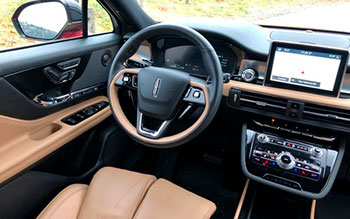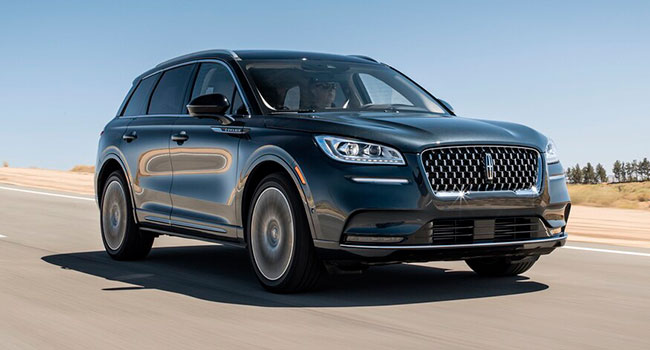 Things have definitely changed in the car industry over the past decade. Especially with domestic manufacturers.
Things have definitely changed in the car industry over the past decade. Especially with domestic manufacturers.
What was known as The Big Three – General Motors, Ford and Chrysler – pretty much owned the car industry in North America right up to the early 1980s and had an iron grip on most buyers’ affections.
But that was then and this is now.
Other manufacturers from around the world – Honda, Toyota, Nissan, Volkswagen, Audi, etc., etc. – have overtaken these three, which are hard pressed to keep up.
Were it not for North American buyers’ enduring love for pickup trucks, GM, Ford and Chrysler would be in even rougher shape than they are now. As the saying goes, the future ain’t what it used to be.
And, of course, massive changes have taken place within Detroit over the past few years. Among other things, GM has ditched the Pontiac and Oldsmobile brands, Ford no longer sells passenger sedans, and Chrysler has been taken over by Fiat.

The Corsair is dripping with luxury features such as heated/chilled front seats with three-setting controls, Sirius radio, touch-screen monitor, full leather interior, tire pressure monitoring, hill start assist and, our columnist’s favourite, “piano key” shifter buttons
Just as GM is focusing much of its energies on Cadillac, Ford is investing massive amounts of capital and research and development into Lincoln. Both companies see their luxury flagships as the face of their corporations.
For 2020, Lincoln offers two upscale sedans and four SUVs, the entry model of which is the Corsair, which is basically the size of a Ford Escape.
Available in two trim levels – Standard and Reserve – the Corsair is propelled by either a 2.0-litre or 2.3-litre four-cylinder engine. Both are turbocharged and develop 250 or 295 horsepower. My tester was the latter model and this power plant is an absolute pleasure. Transmission is an eight-speed automatic only and both models feature all-wheel-drive.
Needless to say, the Corsair is dripping with luxury features and modern conveniences. My tester had, among other things, heated/chilled front seats with three-setting controls, Sirius radio, touch-screen monitor, full leather interior, tire pressure monitoring, hill start assist and, my favourite, “piano key” shifter buttons. No shift lever, just four buttons – press one and off you go.
A few notes.
- It took me awhile to get used to the shifter buttons, but I grew to like them. Shifting from Reverse into Drive after parking and so on is a little leisurely, but I could live with it.
- They may be heated and ventilated with settings and controls up the yin-yang, but the front seats in this car gave me fits. It could be just me, but these were possibly the most uncomfortable seats I’ve ever parked my backside in. Especially the lumbar support, which is about as comfy as a concrete easy chair. A deal-breaker for me.
- The eight-speed gearbox is a little on the nervous side. In combination with an auto-start feature, you have a vehicle that takes a little while to make up its mind when the light goes from red to green. It kind of lurches forward for a nano-second and made me a little nervous.
- I absolutely loved the turbo 2.3-litre engine in my tester. For such a relatively small displacement power plant, it’s amazingly responsive with all kinds of reserve power. Almost felt like a V8. A pleasant surprise.
- Noise, vibration and harshness (NVH) in this vehicle is outstanding. It may not be comfortable, but it is quiet and insulating. Outside noise and road racket is almost nonexistent. That tells me that it’s well screwed together with top-notch assembly quality. It definitely feels like a luxury automobile.
It’s interesting that Ford has decided to divest itself of bread-and-butter family sedans and focus company resources on its upscale division. Especially when you consider the public appetite for fuel-sipping and electric cars these days. People just aren’t buying luxury mobiles like they used to.
But if that’s your heart’s desire, nobody makes an upscale cruiser better than Lincoln.
2020 Lincoln Corsair
Engine: 2.3-litre turbocharged four cylinder
Transmission: eight-speed automatic
Drive: all-wheel
Horsepower: 295 at 5,500 rpm
Torque: 310 foot pounds at 3,000 rpm
Base price: $50,500
Fuel economy: 11.1 litres/100 km city and 8.2 highway, with premium gas
Some alternatives: Cadillac XT5, Infiniti QX80, Mercedes GLE, Acura MDX, Audi Q7, Jaguar F-Pace, Lexus GX. Porsche Cayenne, Volkswagen Atlas, Hyundai Palisade.
Ted Laturnus writes for Troy Media’s Driver Seat Associate website. An automotive journalist since 1976, he has been named Canadian Automotive Journalist of the Year twice and is past-president of the Automotive Journalists Association of Canada (AJAC).
The views, opinions and positions expressed by columnists and contributors are the author’s alone. They do not inherently or expressly reflect the views, opinions and/or positions of our publication.


